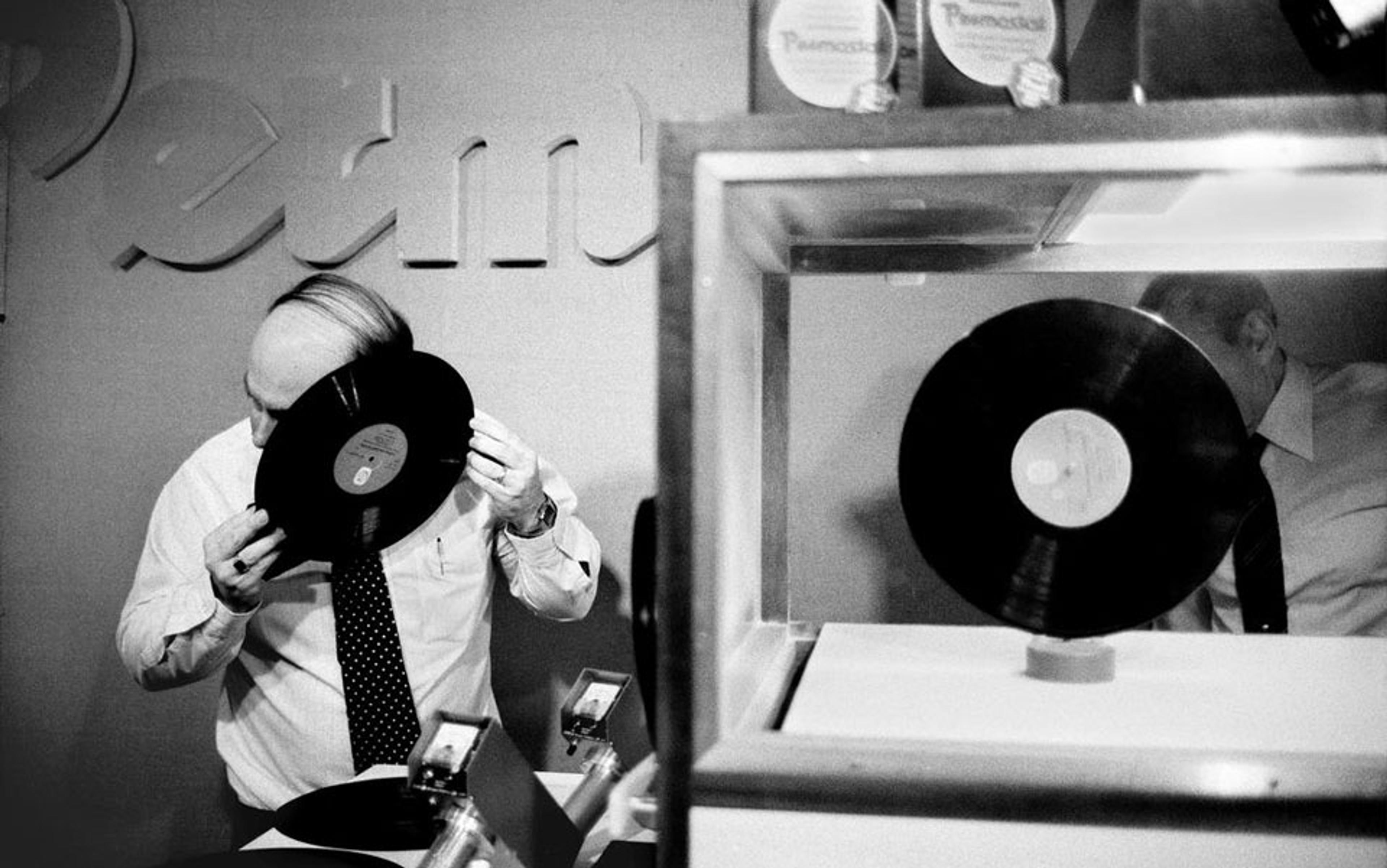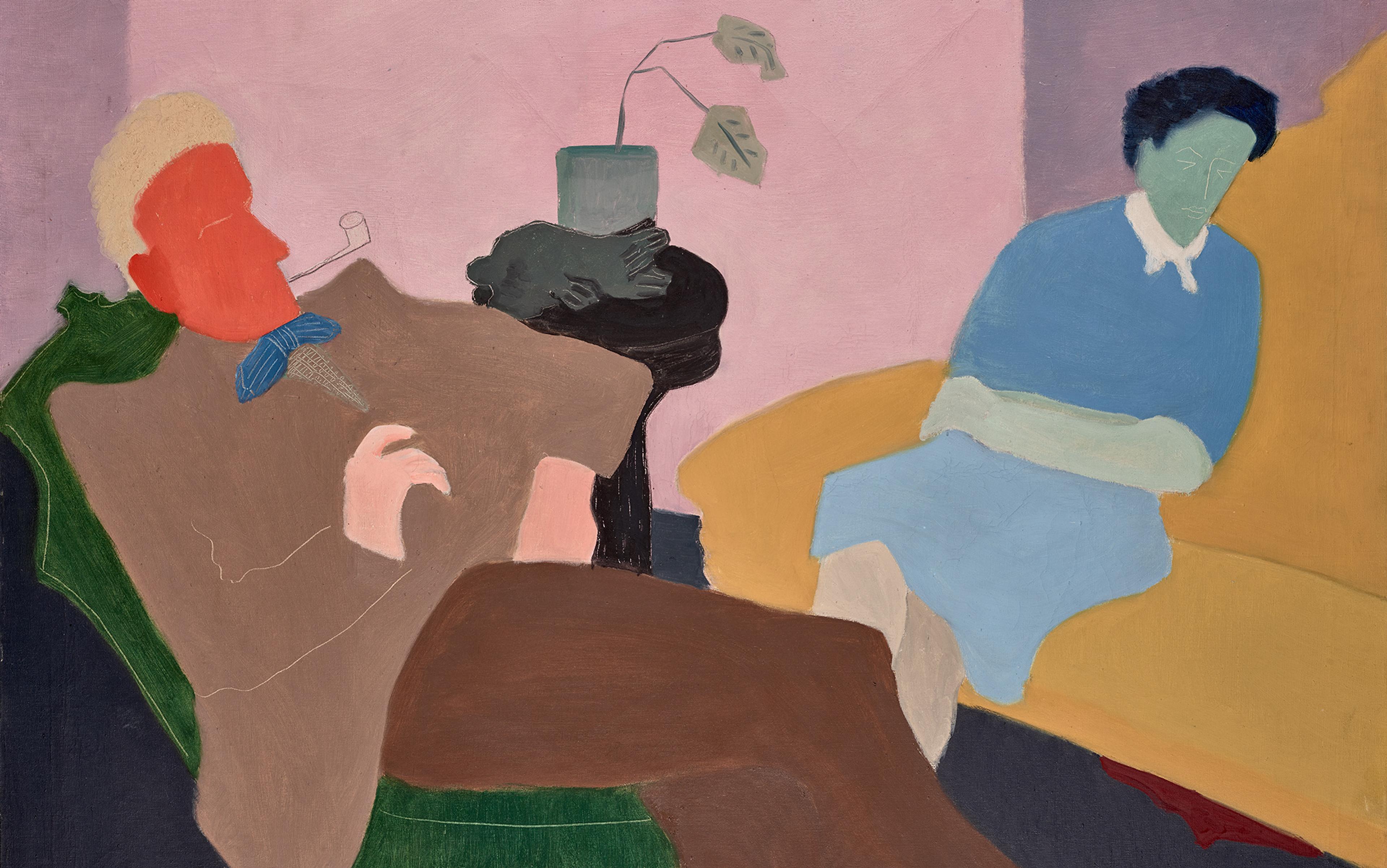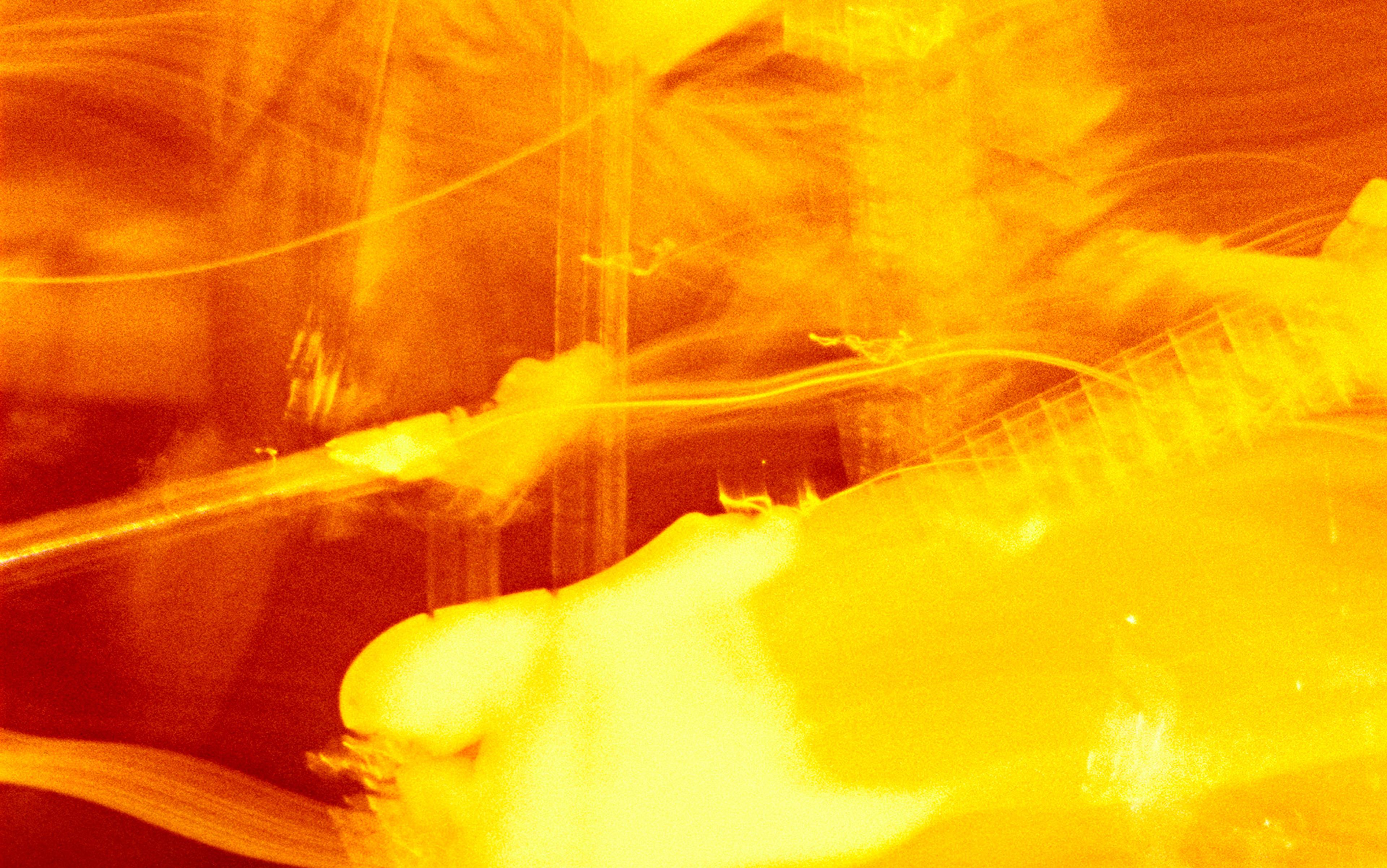It seems a bit daft, wondering how to listen. Sound, after all, enters us involuntarily — the dawn chorus, the car alarm — and there’s only so much we can do to screen it out. If someone starts lifting the roads or sends the Heathrow flight path directly overhead, then obviously the problem is not how to listen but how to shut the bloody thing up.
Still, there is a difference, strong but not always noted, between listening and hearing. You hear the pneumatic drill, though you would rather not listen. You listen for your children’s voices in the playground, but you can’t always hear them. In urban environments, there’s usually a surplus of sound — so much, in fact, that it often becomes difficult to hear anything at all. But if we become too good at filtering things, have we also damaged our capacity to listen?
To understand listening, it helps to understand hearing. Physically, the process is broken up in three ways. Firstly, in mechanical form through the ear, the nervous system, and the brain. Secondly, in the form of high-, mid- and low-frequency sound-waves. And, finally, there are two different sorts of hearing: conductive (the vibrations made by sound travelling through the body, the clearest example being what you feel when you hear a cathedral organ) and sensorineural — the messages fed through and processed by the inner ear and cochlea.
To appreciate fully the impeccable splendour of the human auditory system, the best thing is to go deaf for a while. In my late 20s, I developed a genetic condition called otosclerosis in which the bones or stapes of the middle ear start to calcify and thus to stop transmitting vibrations to the inner ear. After 12 years of using digital hearing aids, I had operations on both ears to replace each stapes with a prosthetic equivalent, and now I hear perfectly again.
I was very unusual in having an operable condition, but my experience of hearing loss wasn’t unusual at all. There are 10 million people in Britain and 48 million in the US with some form of hearing impairment, yet very few of them will have lost all sound across all frequencies. Instead, they will have lost a bit more of one and a bit less of another. Their sensitivity to low frequencies might be on the right side of normal, while their mid and high are through the floor. They might not be able to pick up individual words perfectly, but they’re probably fine at picking up all the other clues that come through speech — pitch, intonation, tone, inflection, cadence, rhythm. They can hear the difference between a question and a statement, or the variation between English and German. One well-known test involves the classified football results. The pitch of the announcer’s voice on the first score will tell you whether the second was a win or a loss. Celtic One (rising), Hibernian Nil (down); Chelsea Nil (even), Arsenal two (even or rising). It works great — until there’s a draw.
For those with more serious loss, the decline of one sense often strengthens others. Watch anyone who has had hearing problems for a while and it’s obvious that they are listening differently. They listen with the whole of themselves, bodies turned towards the speaker, drinking in cues. They don’t hear so much as inhale, taking in everything from the expression in the other person’s eyes to the story told by their hands. At a sign language class or a deaf pub night, people — British people, even — will be listening and communicating with everything they have: gesture, expression, if necessary grabbing the other person and physically manhandling them into understanding.
Edinburgh has a very particular acoustic — tyres on cobbles, seagulls, the smutty exhalations of buses
Katrina Burton started to lose her high-frequency hearing about 15 years ago, halfway through her undergraduate degree in music. She went on to do a Masters, then a PhD in Composition, and then became a lecturer at Napier University in Edinburgh. Initially, the reduction in her hearing meant only subtle changes in the way she listened. She would find that she was turning her left ear towards people even when they were sitting on her right, or looping round people in the street to hear them, or grabbing at words in a sentence in an attempt to predict the full meaning.
Over the years, she has learnt to listen visually. ‘I do read facial expressions a lot. I remember being in a taxi with a friend, and when we got out she said, “Wow! Could you hear the driver?” I said, “Not a word.” She said, “But you were following the conversation.” I wasn’t — I was just watching his face in the mirror, and when he said something serious, I’d go “Oh dear,” and when he said something a bit more animated, I’d go, “Oh right!” I could catch the tone of his voice and if he was moving his hands, and I was using that. It’s like people speaking in a foreign language — you don’t know what they’re saying but you can follow the mood of it, whether it’s a good conversation or they’re having a fight, and you can pick up on the body language.’
Burton lives and works in Edinburgh, a windy city built on hills. Like all towns, it has a very particular acoustic — tyres on cobbles, seagulls, the smutty exhalations of buses — and she has learnt to adapt her listening accordingly. Some 450 miles further south in Suffolk, the noise consultant Rupert Taylor has been writing, lecturing and advising on acoustics since the 1960s. Unsurprisingly, and despite some tinnitus, he has extremely highly trained hearing — trained enough to detect the difference in each place he goes to. ‘I told someone a long time ago that I could tell what station I was in by the sound of it,’ he said. ‘Certainly on some mainlines, it’s easy to tell which station you’re in just by listening — you could do it with your eyes shut. On the east coast mainline, you can tell the difference between York, Doncaster, Newcastle. They’re all Victorian buildings, but they’re all very distinct. York has a huge barrel-vaulted, fairly symmetrical building, so you can hear the focusing effect of reflections from the roof, as does Newcastle, but Newcastle is not so regular — it’s curved.’ And can he hear home? ‘Yes, I think so.’
When Taylor published his influential layman’s guide, Noise, back in 1971, the field of acoustics was so undeveloped it still hadn’t been established that too much sound could have an impact on hearing. In many industries, loudness was simply seen as standard. In Scotland, the 19th-century Dundee jute mills were so noisy that the whole town effectively became deafened, and in places like the Clyde shipyards workers could communicate with each other only by using sign language — specialised listening in a place where hearing itself was painful. Today, awareness of the effects of sound has risen to the point where Taylor rarely needs to advise on workplaces.
The one area that has not improved, Taylor suggested, is the one in which hearing probably matters most — music. And, perversely, it is often those who love music most who are most inclined to obliterate their sensitivities at festivals or gigs. Hidden behind the problem of volume is the issue of amplified music. Most people are so used to hearing boosted or electronically remastered music that they’ve rarely heard it in its natural state. ‘It’s like the difference between instant coffee and coffee made with beans,’ says Taylor, ‘It’s a spatial difference. The experience of listening to acoustic music in a hall is a three-dimensional thing and there’s virtually no 3D in electronically reinforced music. It’s an unfortunate metaphor, but our hearing is being dumbed down.’
‘As you learn to play your instrument better, you learn to listen better’
What are the long-term consequences of that dumbing? ‘You lose a dimension from one of our senses. Or two dimensions.’ Everyone ends up with an unspecified sense that something’s missing, but they can’t work out what it is? ‘Yes. And if they had enough hearing left, and you took them to the Wigmore Hall in London and gave them an experience of a chamber orchestra playing in a place like that, they’d suddenly realise, God, there is more to this than I realised.’
Audiences might not be fully conscious of the change in their listening, but musicians certainly are. So how does the way musicians listen differ from the way non-musicians do? Alex South, a member of the Scottish Clarinet Quintet and a research partner at the Science and Music Research Group at Glasgow University, put it like this: ‘There’s listening to yourself and listening to others, listening for tuning and your place in the harmony, feeling the beat and feeling your rhythms and how they synch with others. Listening to the beginnings and ends of notes within your section in the orchestra, listening to accents, degree of separation of notes, listening to dynamics and phrase shapes. Listening to tone colour and attempting to match your sound to it, listening to the intake of breath of your section principal or the French horn player sitting next to you, listening to any or all of these things holistically or “atomistically”.
‘As you learn to play your instrument better, you learn to listen better. Your ability to produce distinct kinds of articulation goes hand in hand with the ability to distinguish them by ear. But more than this — your ability to distinguish by ear is felt in your body as a set of kinaesthetic responses, memories and anticipations.’ As a form of listening, ‘it’s probably more active, detailed, precise [than that of a non-musician]. You listen for cues, you’re aware (consciously or unconsciously) of tiny fluctuations in tempo and tuning. You might be more aware of the structural aspects of the piece. Perhaps the flip side is that it’s harder to lose yourself in the music, to be swept away by it.’
True music, South suggested, occurs when the individual listening of each player harmonises with the whole, and all the other elements — the players’ skill, their familiarity with the piece, the condition of their instruments, the gap between what they’re feeling and what the music is trying to express — reach a point of perfect synchronicity.
Sometimes what that music is trying to express is deafness itself. Katrina Burton had already decided to give up performing and concentrate on composition when she first started to lose her hearing. One of her solo piano pieces, Moon Palace, is in part an attempt to listen to the sound of her own tinnitus, which was particularly troubling her at the time she was writing her PhD. ‘There was one day when I went to the piano in the music department and thought right, I’m going to investigate these sounds. So I just wrote down the pitches that I could hear right at that point in time. So the very start of that piece, which is quite high and delicate, is actually just the sound of my tinnitus on one particular day, and then it grows and grows and it does become quite dissonant and loud. That was the expression of my frustration when sometimes the tinnitus is really overpowering.’
Others have expressed their troubles in different ways. The inventor of the phonograph Thomas Edison’s hearing began to degenerate from an early age. Discouraged by his failure to make an acceptable hearing aid, he approached the problem from another angle. By trapping sound within the phonograph, he could at least replay it whenever he wanted, even if the only way he could hear his own invention was by placing his head against it and biting into the wood as it played — a technique he also used on pianos. ‘The soundwaves thus come almost directly to my brain,’ he wrote. ‘They pass only through my inner ear. And I have a wonderfully sensitive inner ear.’ That sensitivity made him a temperamental arbiter of musical taste. Because the frequencies of certain instruments and voices were uncomfortable for him, he often refused to issue them on his record label, and always insisted that the best way of judging a piece of music was by examining the shape of the grooves on the disc.
A century on, Burton has been doing the same thing in a different way. ‘Occasionally there are pitches that I will struggle with,’ she told me, ‘but it depends on the instrument. So something might be inaudible with the violin because it’s such a thin sound — it just becomes a white noise. The same with the flute, but that’s painful, the particular timbre of the flute. It’s got to the point where I just don’t want to write for it, or (if I do) to keep it in a low register. It’s incredibly uncomfortable with certain instruments the higher up they go, which surprises people — their reaction is, I thought you had a hearing loss, so how could something be loud and painful?’
There’s a whole force-field of difference between a couple unspeaking in anger and a couple unspeaking in love
As Burton suggests, listening can sometimes be hard. It doesn’t matter what degree of hearing loss people have, or how long they’ve had it, every single one of them says the same thing: it’s tiring. When your ears and your brain are having to work much harder both to get the sounds in and then to turn them into a comfortable and comprehensible form, then you’re using up a lot of energy. If your listening is as skilled and nuanced as a musician’s, it can be exhausting.
In fact, those who have trouble hearing are often highly skilled listeners, fluent in acoustic variation and the power of sound in a way that few fully hearing people ever are. Most of them also have a different relationship to silence. All silences have their own personalities — contented or meditative, empty or replete. If there’s a whole force-field of difference between a couple unspeaking in anger and a couple unspeaking in love, then there’s also a huge variation in the silence generated both by lots of people silent in a space such as a Quaker meeting or a Buddhist meditation practice, and the silence of space itself.
True silence outdoors is as rare as it is inside, especially in a place like Britain, fizzing with people and movement. Even if there is no road or aircraft noise, then there are the susurrations of trees, leaves, grasses, birds, insects — the sounds of life in the process of living. These are the sounds that are probably most endangered and least listened to. It isn’t that we can’t hear them; it’s just that, so often, they’re hidden by the white noise of our own thoughts. More than anything, more than planes or drills, it is that soft blanketing snowfall of our own intelligence that blocks our ears. Go for a walk in the country and what you hear is not the clank of geese or the cows on their way to milking; it’s your own head.
But even that is very different to an active desire not to hear. The most extreme examples of the body’s ability to shut out unwanted sound occurs during conflicts. ‘Psychogenic’ deafness first came to widespread attention after the First World War when many of those exposed to shellfire didn’t just go deaf afterwards, they became mute as well. It was as if, somewhere on the battlefield, they’d misplaced the will both to receive and to transmit.
Modern warfare has only exacerbated the problem. The US army now calculates that nearly two-thirds of front line troops in Iraq and Afghanistan have suffered hearing damage. Goaded by the expense of treating or pensioning off so many deafened servicemen, the military has started to give the subject their attention. That in turn has led to the science of psychoacoustics or, in its more sinister form, ‘white torture’, overloading suspects’ senses by playing drills or death-metal music at extreme volume for hours on end. They say the shamans can sing a man to death; now the government is having a go, too.
But if sound is a thousand times more powerful than we give it credit for, then so too is the power of being heard. Most people are used to the idea of using music to alter their own mood. Less common is the idea that just being listened to is itself a harmony, and a balm. The last time I took a London cab, the driver told me that many of his fares are so desperate to have someone hear them that they actually get down on their knees and confess into the little slit in the window between the driver and the back. So what is it they need to say? ‘Men brag, women want a shoulder. Men want to talk about affairs, deals, cars, and women want to cry about the children they never had.’
Almost everyone has things they don’t want to hear: their son’s fights, their partner’s rants, the high-stakes stuff about debt or divorce or mortality. But there’s a difference between offering someone a better connection and knowingly taking another man’s poison. And sometimes it takes a lot more energy not to listen to someone than it does to hear them out. If you completely listen, then you completely open yourself. And that, in the end, is probably the scariest and the most exhilarating thing you’ll ever hear.






